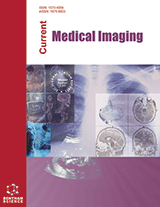[1]
Sung SH, Jang IS. Isolated central nervous system relapse of acute lymphoblastic leukemia. Brain Tumor Res Treat 2014; 2(2): 114-8.
[2]
Cancela CS, Murao M, Viana MB, de Oliveira BM. Incidence and risk factors for central nervous system relapse in children and adolescents with acute lymphoblastic leukemia. Rev Bras Hematol Hemoter 2012; 34(6): 436-41.
[3]
Chamberlain MC, Glantz M, Groves MD, Wilson WH. Diagnostic tools for neoplastic meningitis: Detecting disease, identifying patient risk, and determining benefit of treatment. Semin Oncol 2009; 36(Suppl.): S35-45.
[4]
Del Principe MI, Buccisano F, Maurillo L, et al. Central nervous system involvement in adult acute lymphoblastic leukemia: Diagnostic tools, prophylaxis, and therapy. Mediterr J Hematol Infect Dis 2014; 6(1): e2014075.
[5]
Craig F, Foon KA. Flow cytometric immunophenotyping for hematologic neoplasms. Blood 2008; 111: 3941-67.
[6]
Chamberlain MC, Sandy AD, Press GA. Leptomeningeal metastasis: A comparison of gadolinium-enhanced MR and contrast-enhanced CT of the brain. Neurology 1990; 40: 435-8.
[7]
Passi N, Degnan AJ, Levy LM. MR imaging of papilledema and visual pathways: effects of increased intracranial pressure and pathophysiologic mechanisms. AJNR Am J Neuroradiol 2013; 34: 919-24.
[8]
Hansen HC, Helmke K. The subarachnoid space surrounding the optic nerves. An ultrasound study of the optic nevre sheath. Surg Radiol Anat 1996; 18: 323-8.
[9]
Pakzad-Vaezi K, Cochrane D, Sargent M, Singhal A. Conventional and diffusion-weighted magnetic resonance imaging findings in a pediatric patient with a posterior fossa brain tumor and papilledema. Pediatr Neurosurg 2009; 45: 414-8.
[10]
Hansen HC, Helmke K. Validation of the optic nerve sheath response to changing cerebrospinal fluid pressure: Ultrasound findings during intrathecal infusion tests. J Neurosurg 1997; 87: 34-40.
[11]
Kimberly HH, Noble VE. Using MRI of the optic nerve sheath to detect elevated intracranial pressure. Crit Care 2008; 12(5): 181.
[12]
Gass A, Barker GJ, Riordan-Eva P, et al. MRI of the optic nerve in benign intracranial hypertension. Neuroradiology 1996; 38: 769-73.
[13]
Watanabe A, Horikoshi T, Uchida M, Ishigame K, Kinouchi H. Decreased diameter of the optic nerve sheath associated with CSF hypovolemia. AJNR Am J Neuroradiol 2008; 29: 863-4.
[14]
Degnan AJ, Levy LM. Pseudotumor cerebri: Brief review of clinical syndrome and imaging findings. AJNR Am J Neuroradiol 2011; 32: 1986-93.
[15]
Geeraerts T, Newcombe VF, Coles JP, et al. Use of T2-weighted magnetic resonance imaging of the optic nerve sheath to detect raised intracranial pressure. Crit Care 2008; 12: R114.
[16]
Watanabe A, Kinouchi H, Horikoshi T, Uchida M, Ishigame K. Effect of intracranial pressure on the diameter of the optic nerve sheath. J Neurosurg 2008; 109: 255-8.
[17]
Seitz J, Held P, Strotzer M, et al. Magnetic resonance imaging in patients diagnosed with papilledema: A comparison of 6 different high-resolution T1- and T2(*)-weighted 3-dimensional and 2-dimensional sequences. J Neuroimaging 2002; 12: 164-71.
[18]
Gibby WA, Cohen MS, Goldberg HI, Sergott RC. Pseudotumor cerebri: CT findings and correlation with vision loss. AJR Am J Roentgenol 1993; 160: 143-6.
[19]
Brodsky MC, Vaphiades M. Magnetic resonance imaging in pseudotumorcerebri. Ophthalmology 1998; 105: 1686-93.
[20]
Jinkins JR, Athale S, Xiong L, Yuh WT, Rothman MI, Nguyen PT. MR of optic papilla protrusion in patients with high intracranial pressure. AJNR Am J Neuroradiol 1996; 17: 665-8.
[21]
Viets R, Parsons M, Van Stavern G, Hildebolt C, Sharma A. Hyperintense optic nevre heads on diffusion-weighted imaging: A potential imaging sign of papilledema. AJNR Am J Neuroradiol 2013; 34(7): 1438-42.
[22]
Geeraerts T, Merceron S, Benhamou D, Vigue B, Duranteau J. Non-invasive assessment of intracranial pressure using ocular sonography in neurocritical care patients. Intensive Care Med 2008; 34: 2062-7.
[23]
Shofty B, Ben-Sira L, Constantini S, Freedman S, Kesler A. Optic nerve sheath diameter on MR imaging: establishment of norms and comparison of pediatric patients with idiopathic intracranial hypertension with healthy controls. AJNR Am J Neuroradiol 2012; 33(2): 366-9.
[24]
Sotoudeh H, Bowerson M, Parsons M, et al. Effect of spatial resolution of T2-weighted imaging on diagnostic efficacy of MRI in detection of papilledema. AJR Am J Roentgenol 2015; 204(3): 602-7.

 32
32 4
4











